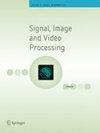HFRAS:为有效增强卫星图像而设计的高密度特征表示模型
IF 2.1
4区 计算机科学
Q3 ENGINEERING, ELECTRICAL & ELECTRONIC
引用次数: 0
摘要
摘要有效地提取卫星图像的特征对分类和后处理至关重要。为此目的创建了许多特征表示模型。然而,大多数方法要么增加了计算复杂度,要么降低了分类效率。本文提出的模型首先收集一组可用的卫星图像,并通过长短期记忆(LSTM)和门控循环单元(GRU)特征的混合表示它们。通过迭代遗传算法对这些特征进行处理,确定提取特征集的最佳增强方法。为了分析这个优化过程的效率,我们建立了一个迭代适应度函数模型,帮助逐步改进分类过程。适应度函数使用精度&基于精度的反馈机制,这有助于调整所提出的LSTM的超参数;GRU特征提取过程。建议的模型使用了100 k张图像,其中60%用于训练,20%用于验证和测试。与传统的增强策略相比,该模型的分类精度提高了16.1%,准确率提高了17.1%。该模型还显示了对越来越多的训练图像集的增量精度增强。本文章由计算机程序翻译,如有差异,请以英文原文为准。
HFRAS: design of a high-density feature representation model for effective augmentation of satellite images
Abstract Efficiently extracting features from satellite images is crucial for classification and post-processing activities. Many feature representation models have been created for this purpose. However, most of them either increase computational complexity or decrease classification efficiency. The proposed model in this paper initially collects a set of available satellite images and represents them via a hybrid of long short-term memory (LSTM) and gated recurrent unit (GRU) features. These features are processed via an iterative genetic algorithm, identifying optimal augmentation methods for the extracted feature sets. To analyse the efficiency of this optimization process, we model an iterative fitness function that assists in incrementally improving the classification process. The fitness function uses an accuracy & precision-based feedback mechanism, which helps in tuning the hyperparameters of the proposed LSTM & GRU feature extraction process. The suggested model used 100 k images, 60% allocated for training and 20% each designated for validation and testing purposes. The proposed model can increase classification precision by 16.1% and accuracy by 17.1% compared to conventional augmentation strategies. The model also showcased incremental accuracy enhancements for an increasing number of training image sets.
求助全文
通过发布文献求助,成功后即可免费获取论文全文。
去求助
来源期刊

Signal Image and Video Processing
ENGINEERING, ELECTRICAL & ELECTRONIC-IMAGING SCIENCE & PHOTOGRAPHIC TECHNOLOGY
CiteScore
3.80
自引率
8.70%
发文量
328
审稿时长
6 months
期刊介绍:
The journal is an interdisciplinary journal presenting the theory and practice of signal, image and video processing. It aims at:
- Disseminating high level research results and engineering developments to all signal, image or video processing researchers and research groups.
- Presenting practical solutions for the current signal, image and video processing problems in Engineering and Science.
Subject areas covered by the journal include but are not limited to:
Adaptive processing – biomedical signal processing – multimedia signal processing – communication signal processing – non-linear signal processing – array processing – statistics and statistical signal processing – modeling – filtering – data science – graph signal processing – multi-resolution signal analysis and wavelets – segmentation – coding – restoration – enhancement – storage and retrieval – colour and multi-spectral processing – scanning – displaying – printing – interpolation – image processing - video processing-motion detection and estimation – stereoscopic processing – image and video coding.
 求助内容:
求助内容: 应助结果提醒方式:
应助结果提醒方式:


